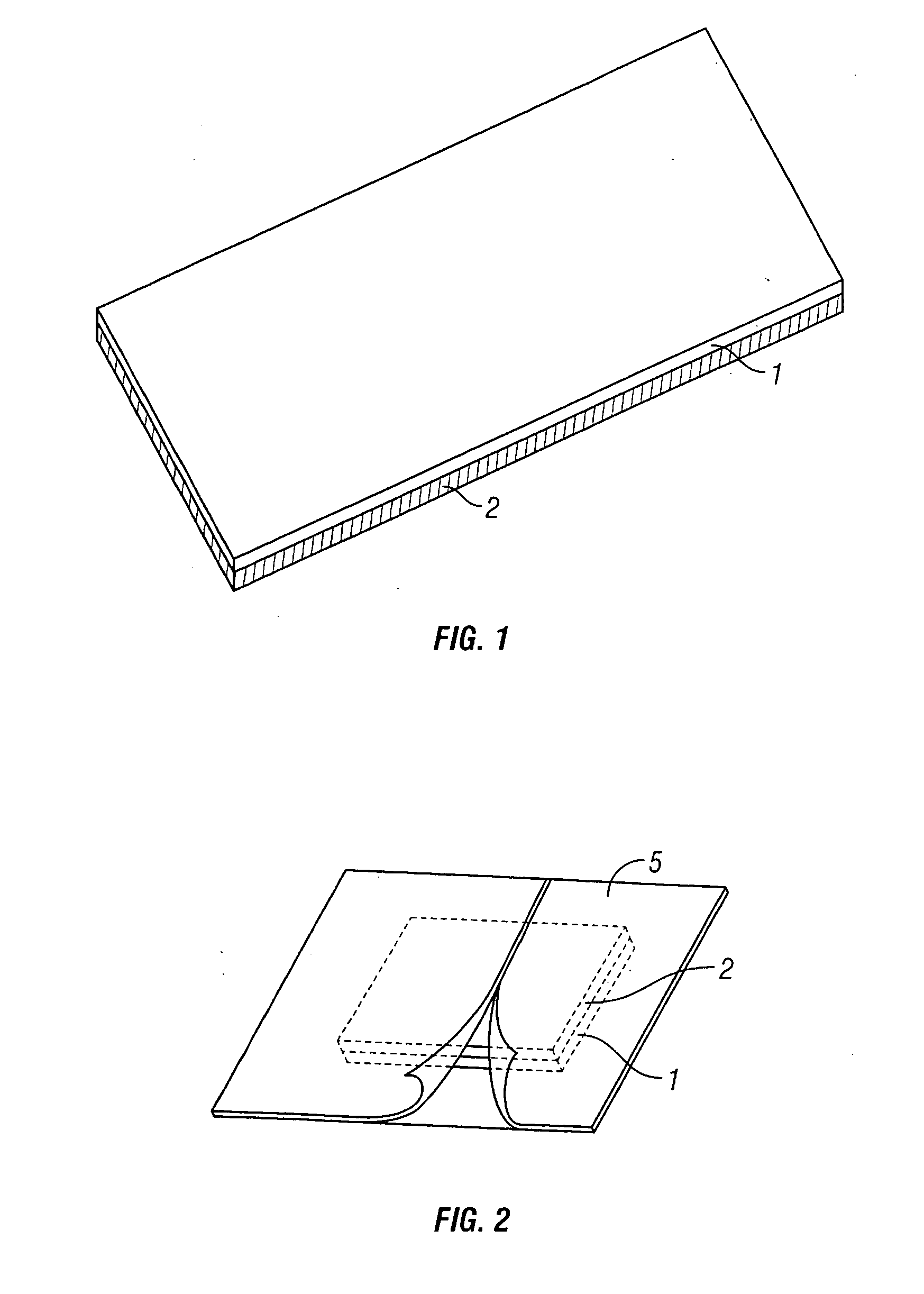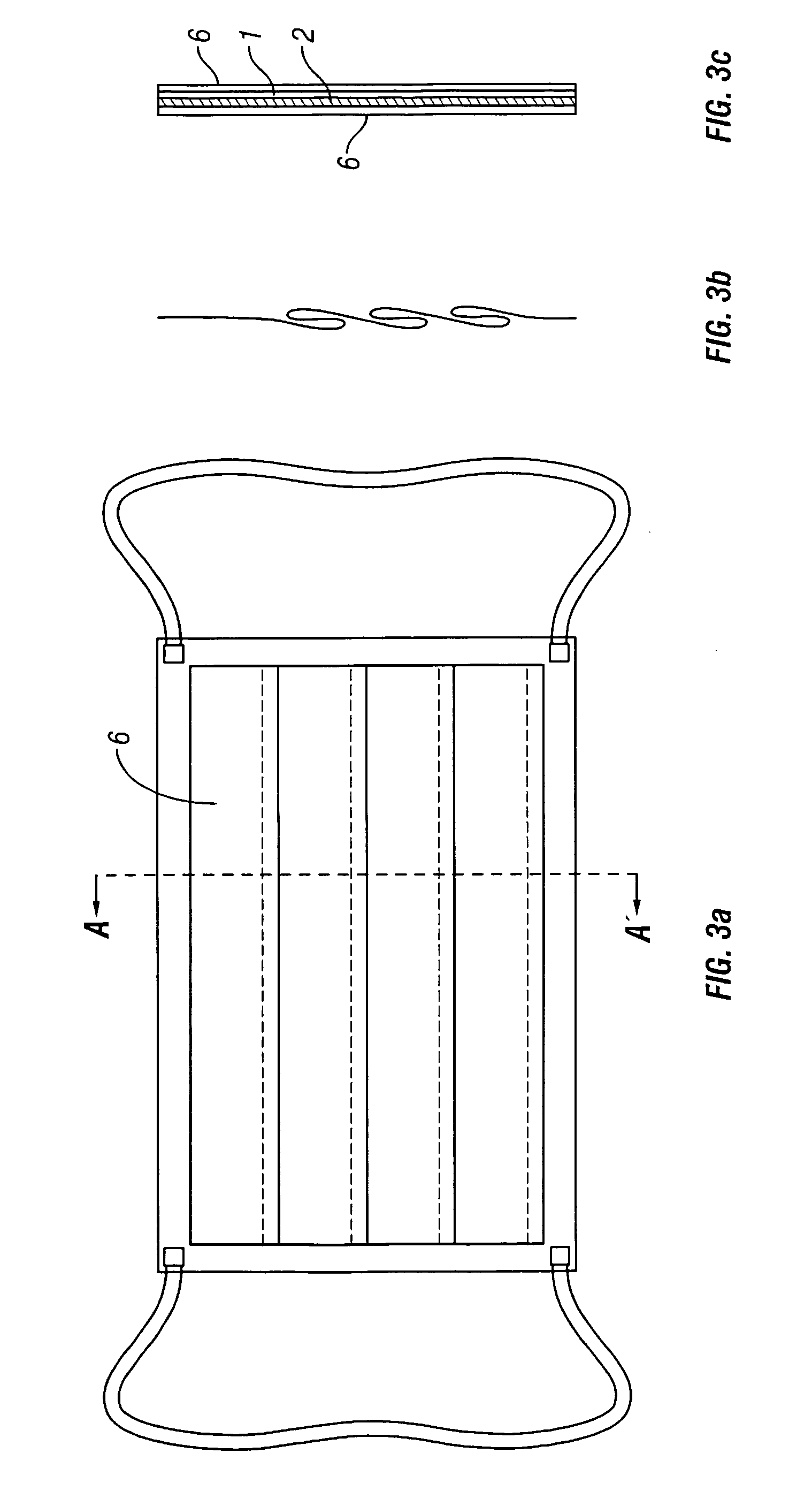Bandage material with active carbon fibers
a bandage material and active technology, applied in medical science, non-surgical orthopedic devices, dressings, etc., can solve the problems of not being active, and slowing down the healing process
- Summary
- Abstract
- Description
- Claims
- Application Information
AI Technical Summary
Benefits of technology
Problems solved by technology
Method used
Image
Examples
Embodiment Construction
[0012] The above-mentioned disadvantages in the prior art can be greatly reduced using the proposed bandage material with active carbon fibers, which, in the presently preferred embodiment depicted in FIG. 1, comprises a load-bearing layer 1 made of an unwoven viscose / polypropylene textile material, and an active layer 2 made of woven or unwoven carbon fiber layers, wherein the load-bearing layer and the active layer are joined to form a single compact union. In some embodiments, the load-bearing and active layers are bonded by a heat-activated process, e.g. welding, fusion, etc., using a non-toxic thermally reactive powder.
[0013] In one embodiment, load-bearing layer 1 further comprises a viscose and polypropylene combination. In some embodiments, the ratio of viscose to polypropylene is about 1:1, though other effective ratios will occur to those of ordinary skill in the art. In other embodiments, load-bearing layer 1 comprises polypropylene, viscose cuts or fibers, or a portion ...
PUM
| Property | Measurement | Unit |
|---|---|---|
| closing speed | aaaaa | aaaaa |
| structure | aaaaa | aaaaa |
| thick | aaaaa | aaaaa |
Abstract
Description
Claims
Application Information
 Login to View More
Login to View More - R&D
- Intellectual Property
- Life Sciences
- Materials
- Tech Scout
- Unparalleled Data Quality
- Higher Quality Content
- 60% Fewer Hallucinations
Browse by: Latest US Patents, China's latest patents, Technical Efficacy Thesaurus, Application Domain, Technology Topic, Popular Technical Reports.
© 2025 PatSnap. All rights reserved.Legal|Privacy policy|Modern Slavery Act Transparency Statement|Sitemap|About US| Contact US: help@patsnap.com


